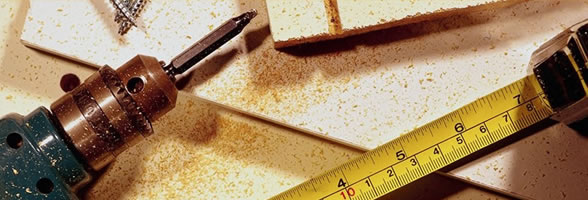
Stránky žáka 63. + 4. třídy ZŠ Kaznějov - fž
Partneři
Sekce Partneři -
https://www.google.com/culturalinstitute/beta/partner
| Partneři |
VŠE |
A - Z |
MAPA |
| Uměleckoprůmyslové muzeum v Praze |
| Zdroj: Uměleckoprůmyslové muzeum v Praze (47 položek) • Prohlídka |
| Uměleckoprůmyslové museum v Praze, založené roku 1885, sídlí v novorenesanční budově postavené v letech 1897–1901 podle návrhu architekta Josefa Schulze. Jeho bohaté sbírky zahrnují umělecké řemeslo, užité umění a design od pozdní antiky do současnosti, především evropského původu se zaměřením na české země. Inspirativní prostředí stálé expozice nazvané Příběhy materiálů seznamuje s vývojem užitého umění: skla a keramiky, užité grafiky a fotografie, prací z kovů, dřeva a jiných materiálů, šperků, hodin a hodinek, textilu, módy, hraček či nábytku. Nedílnou součástí UPM je i největší česká odborná knihovna specializovaná na výtvarné umění a příbuzné obory. Svoje sbírky muzeum prezentuje v pobočkách na zámku v Kamenici nad Lipou a v Muzeu textilu v České Skalici. UPM spravuje také komorní galerii Josefa Sudka na Úvoze poblíž Pražského hradu. |
Giovanni Castrucci )1601) - Praha |
| French Senate (Francouzský senát) |
| Zdroj: French Senate (171 položek) • Prohlídka okolí Senátu (Lucemburské zahrady) |
| The French Parliament is made up of two chambers, the National Assembly and the Senate. Members of the two Houses are chosen by two different electoral systems. This ensures that all the diverse components of French society are represented as fairly as possible. Examination of bills by both Houses of Parliament makes for better laws and the well proven experience of the Senators improves their content. The Speaker of the Senate ensures the stability of France’s institutions as he is called upon to replace the President of the Republic in the event of his death or resignation. Even in France few people have an in depth knowledge of how the Senate works as only local electoral office holders and members of the Assembly of French Citizens Resident Abroad elect the senators. |
| Solomon R. Guggenheim Museum and Foundation |
| Zdroj:Solomon R. Guggenheim Museum and Foundation (New York, USA) - 204 položek Interní street view muzea |
| Founded in 1937, the Solomon R. Guggenheim Foundation is dedicated to promoting the understanding and appreciation of art, primarily of the modern and contemporary periods, through exhibitions, education programs, research initiatives, and publications. The Guggenheim network that began in the 1970s when the Solomon R. Guggenheim Museum, New York, was joined by the Peggy Guggenheim Collection, Venice, has since expanded to include the Guggenheim Museum Bilbao (opened 1997), and the Guggenheim Abu Dhabi (currently in development). Looking to the future, the Guggenheim Foundation continues to forge international collaborations that take contemporary art, architecture, and design beyond the walls of the museum. The Foundation is also committed to fostering research, exhibitions, and collections in the field of global art through such programs as the Asian Art Initiative (founded in 2006), the Guggenheim UBS MAP Global Art Initiative (founded in 2013), and The Robert H. N. Ho Family Foundation Chinese Art Initiative (founded in 2013). More information about the Foundation can be found at guggenheim.org. |
Hang It All - Gabriel Sierra - 2006 |
| Muzeum of Ethnic Cultures, Minzu University of China |
| Zdroj: Muzeum of Ethnic Cultures,Minzu University of China (Čína) - 609 položek |
| Founded in 1951, the Museum covers a building area of 4800 m2 with the exhibition area of 1800 m2. It is a museum of ethnology specializing in preservation, display and study of ethnic cultural relics of 56 ethnic groups in China. Preserved in it are 14 types, more than 20,000 pieces of cultural relics including production tools, daily articles, religious utensils, costumes, ancient relics, documents and musical instruments. Among them, there are a large number of excellent exhibits of costumes and ornaments that reflect Chinese unparalleled talent and excellent craftsmanship of spinning, dyeing, tanning and embroidering. In addition, there is no lack of treasures of high historical and artistic values such as prehistoric pottery jar, bronze drum in the Eastern Han Dynasty and Buddha statue, Thangka, the Ancestor Image, Dongba Scripture , Pattra-leaf Scripture in the Ming and Qing Dynasty. The presents to Chinese party and state leaders given by the ethnic groups during the early days of the nation are also of high political and historical values. It's worth mentioning that our museum preserves a large amount of religious utensils and cultural relics of ethnic groups in Taiwan, occupying the leading position in both quality and quantity among similar museums. Adhering to the purpose of serving for education, scientific research and the society. Museum of Ethnic Cultures has held dozens of exhibitions in various forms at home and abroad, actively showing our collections of cultural relics. In particular, the various exhibitions in the museum have been the second class for a large number of students and the public to receive patriotic and traditional ethnic education. In 2006, the museum was confirmed as “National Unity and Progress Education Base” by the State Ethnic Affairs Commission; “Patriotism Education Base in Haidian District, Beijing” and “Adolescent Out-school Education in Haidian District, Beijing” by the Beijing Municipal Education Committee. |
| Dinosaur National Monument, National Park Sevice |
| Zdroj: Dinosaur National Monument (Jensen, USA) • Dinosaur National Monument Virtual Museum Exhibit |
|
Dinosaur National Monument is located on the southeast flank of the Uinta Mountains on the border between Colorado and Utah at the confluence of the Green and Yampa Rivers. Dinosaur National Monument protects a large deposit of fossil bones of creatures that lived nearly 150 million years ago. The fossils help us learn more about these fascinating animals. Dinosaur National Monument is special because visitors can see fossils exposed on the cliff face of the Douglass Quarry at the park visitor center. This site provides one of the best snapshots of Jurassic dinosaurs found anywhere in the world. The quarry was named after Earl Douglass, the paleontologist who found it. |
Stegosaurus |


